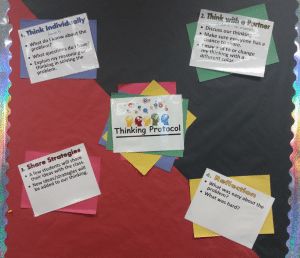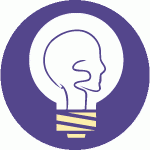 |
The MC2 Thinking Protocol offers a structured opportunity for students and teachers to learn to think flexibly and approach mathematics with productive curiosity by creating opportunities for:
- Students to engage in meaningful mathematical dialogue with each other.
Children learn math when they are actively engaged in thinking and talking about how they understand a situation. When students can make conjectures and compare/contrast those thoughts with the opinions of others, mathematical thinking becomes more flexible and invokes additional ways of thinking. This malleability is an asset to learning mathematics. - Teachers to formatively assess students’ thinking through careful listening and questioning.
Reflection on student work and student conversations create a platform for teacher dialogue. The protocol can reveal what students actually “THINK” about a specific mathematical concept or idea and why they hold these beliefs. Through listening to student dialogue and crafting effective questions, teachers can uncover significant information that helps guide instructional next steps for the development of student understanding.
Thinking Protocols 2-5 below each build on the first Thinking Protocol listed-Uncovering Student Thinking. For ease of use, changes are highlighted in blue outlined boxes within each associated One-Pager and Teacher Guide.
- Uncovering Student Thinking
- Students’ Self-Assessment of Their Learning and Understanding
- Comparing Different Student Strategies
- Mastery of Specific Content and/or Mathematical Practice Standard(s)
- Meaningful Test Prep
Keep the following question in mind while exploring each of the five ways of implementing the MC2 Thinking Protocol below: How might using the MC2 Thinking Protocols support confidence and engagement in the classroom?
|
|
|
|
|
|
|
|
|
|
|
|
|
|
|
|
|
|
|
| 5. MC2 Thinking Protocol for Meaningful Test Prep This protocol may be used to BUILD STUDENT CONFIDENCE in:
|
 |
 |
|
|




